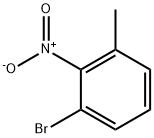o-Nitrotoluene , Analysis standard , 88-72-2
Synonym(s):
1-Methyl-2-nitrobenzene;2-Nitrotoluene;o-Nitrotoluene
CAS NO.:88-72-2
Empirical Formula: C7H7NO2
Molecular Weight: 137.14
MDL number: MFCD00007157
EINECS: 201-853-3
PRODUCT Properties
| Melting point: | -9 °C |
| Boiling point: | 225 °C(lit.) |
| Density | 1.163 g/mL at 25 °C(lit.) |
| vapor density | 4.72 |
| vapor pressure | 0.1 hPa (20 °C) |
| refractive index | n |
| Flash point: | 223 °F |
| storage temp. | Store below +30°C. |
| solubility | 0.65g/l (experimental) |
| form | Liquid |
| color | Clear yellow to yellow-green |
| Specific Gravity | 1.16 |
| PH | 6-8 (H2O) |
| explosive limit | 1.47-8.8%(V) |
| Water Solubility | 0.44 g/L (20 ºC) |
| Merck | 14,6650 |
| BRN | 1907580 |
| Henry's Law Constant | 1.25 at 25 °C (thermodynamic method-GC/UV spectrophotometry, Altschuh et al., 1999) |
| Exposure limits | NIOSH REL: TWA 2 ppm (11 mg/m3), IDLH 200 ppm; OSHA PEL: TWA 5
ppm (30 mg/m3); ACGIH TLV: TWA 2 ppm (adopted). |
| Dielectric constant | 27.399999999999999 |
| Stability: | Stable. Combustible. Incompatible with oxidizing agents, strong bases, sulfuric acid, reducing agents, hydrogen, sodium. |
| InChIKey | PLAZTCDQAHEYBI-UHFFFAOYSA-N |
| Surface tension | 41.5mN/m at 20°C |
| CAS DataBase Reference | 88-72-2(CAS DataBase Reference) |
| IARC | 2A (Vol. 101) 2013 |
| NIST Chemistry Reference | Benzene, 1-methyl-2-nitro-(88-72-2) |
| EPA Substance Registry System | o-Nitrotoluene (88-72-2) |
Description and Uses
2-Nitrotoluene is a light yellow to darker yellow-green liquid. It is used for the synthesis of a variety of industrial products. These include to synthesise agricultural and rubber chemicals, azo and sulphur dyes, and dyes for cotton, wool, silk, leather, and paper. O-nitrotoluene decomposes on contact with strong oxidants, reducing agents, acids, or bases producing toxic fumes, nitrogen oxides, and carbon monoxide.
2-Nitrotoluene is used as an intermediate for the o-toludine synthesis, which finds application in the dyestuff industry. It is employed as a reagent in detecting and photometric determining oxidizing agent. It is also used in the determination of prussic acid content in the air. It acts as a precursor to prepare 2-amino-4-chlorotoluene, 2-amino-6-chlorotoluene, nitrotoluenesulfonic acids and toluene nitrosulfonic chlorides. It acts as a nitrogen supplement in the culture medium of pseudomonas sp. strain ClS1. It acts as a carbon and energy supplement in the culture medium of Pseudomonas sp. strain JS42.
Safety
| Symbol(GHS) |    GHS07,GHS08,GHS09 |
| Signal word | Danger |
| Hazard statements | H302-H340-H350-H361f-H411 |
| Precautionary statements | P202-P264-P270-P273-P301+P312-P308+P313 |
| Hazard Codes | T,N,F |
| Risk Statements | 45-46-22-51/53-62-36/37/38-23/24/25-11-36-20/21/22 |
| Safety Statements | 53-45-61-27-16-36/37-26 |
| OEB | A |
| OEL | TWA: 2 ppm (11 mg/m3) [skin] |
| RIDADR | UN 1664 6.1/PG 2 |
| WGK Germany | 3 |
| RTECS | XT3150000 |
| Autoignition Temperature | 420 °C |
| TSCA | Yes |
| HazardClass | 6.1 |
| PackingGroup | II |
| HS Code | 29042000 |
| Hazardous Substances Data | 88-72-2(Hazardous Substances Data) |
| Toxicity | LD50 orally in Rabbit: 891 mg/kg |
| IDLA | 200 ppm |






